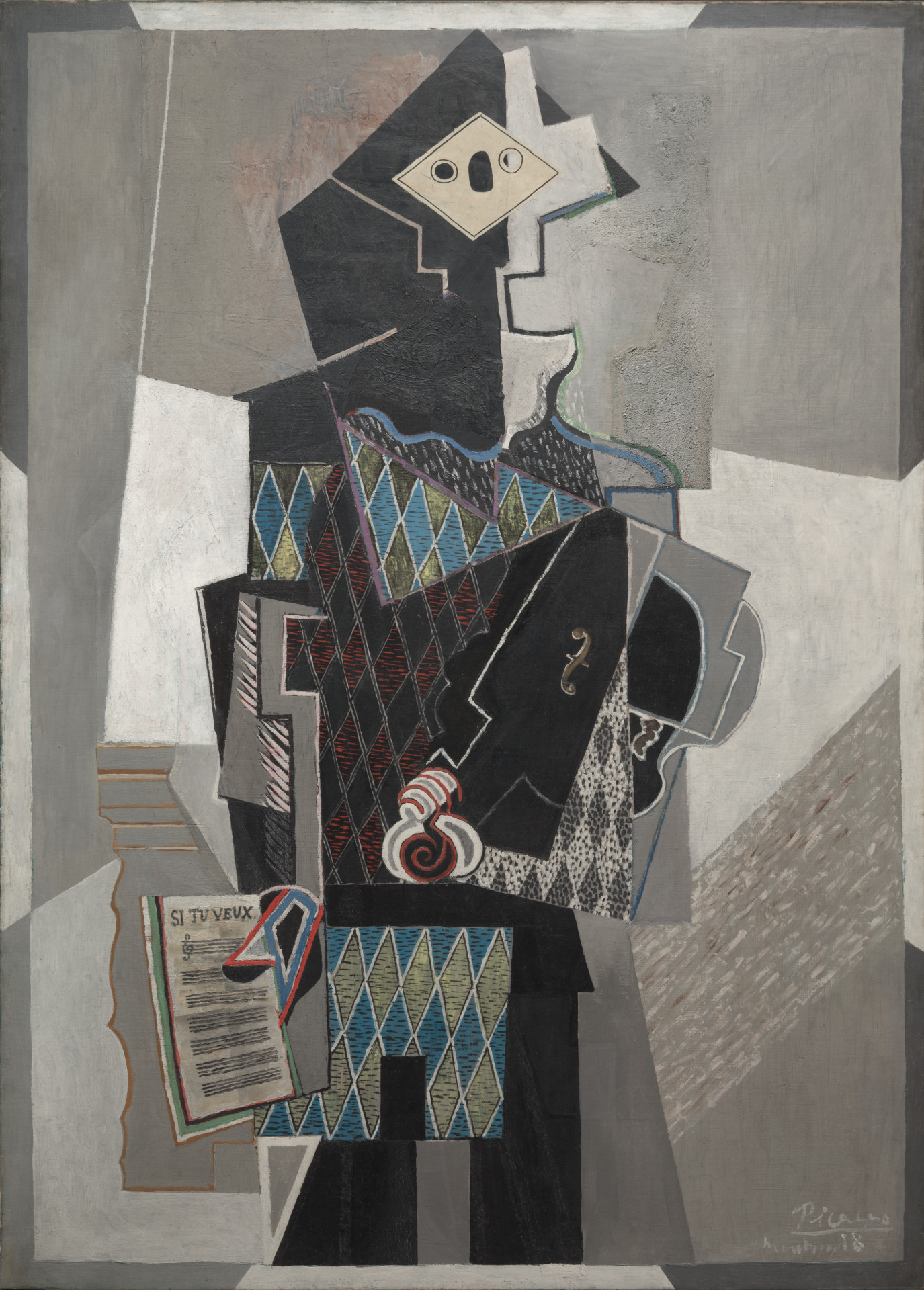
- Magazine Article
- Collection
Harlequin with Violin
A new take on Picasso’s mysterious painting

Picasso’s Harlequin with Violin, featuring a large, imposing figure holding a violin and a sheet of music titled “Si tu veux” (If you wish), is often interpreted as a marriage proposal to the artist’s first wife, Russian ballerina Olga Koklova. Unfortunately, this reading fails to account for the most salient aspects of the painting’s iconography. Picasso painted this mysterious image in the spring of 1918 while living in the Montrouge, a commune on the southern outskirts of Paris. Most interpretations focus on the figure of Harlequin, recognized by his diamond-patterned costume and dark, triangular Napoleonic hat. Picasso personally identified with this stock figure from the popular Commedia dell’arte and repeatedly depicted himself dressed as Harlequin, a ubiquitous personification of bohemian culture. Picasso probably knew that Edgar Degas and Paul Cézanne had painted the character, and he likely encountered street musicians, cabaret entertainers, and carnival barkers dressed as a Harlequin.
Picasso married Koklova in July 1918, so it is widely assumed that the sheet music, inscribed with the title of a popular song that begins, “If you wish, Marguerite, make me happy by giving me your heart,” was intended as a marriage proposal. The problem with this interpretation is that close examination of the painting reveals that it depicts not one but two figures. The second is Harlequin’s companion in the Commedia dell’arte, the stock character Pierrot, who is associated with the moon and melancholy, and typically wears a broad-brimmed white hat, white ruffled smock, and white makeup or a white mask. Picasso certainly knew many precedents for this figure, including Antoine Watteau’s Gilles as Pierrot in the Musée du Louvre. It is crucial to note that Picasso never depicted himself as Pierrot, but instead associated this character with his closest friend, the poet Guillaume Apollinaire. Picasso made a number of drawings in 1918 depicting Harlequin and Pierrot as two separate figures standing together. Why he combined them in this painting may perhaps be explained by events in his personal life.

Picasso was a witness at Apollinaire’s marriage to Jacqueline Kolb in a Paris church on May 2, 1918, and as a wedding present he gave Apollinaire a watercolor of a Cubist guitar player. Apollinaire, in turn, witnessed Picasso’s marriage to Koklova on July 12 at a Russian Orthodox church, an event that inspired Apollinaire’s poem that includes the phrase: “Our marriages are children of this war.” (Apollinaire had been released from the French army in 1916 after suffering a serious head wound.) Pierrot’s presence in Picasso’s painting and the phrase “if you wish” most likely refer to Picasso’s and Apollinaire’s decision to abandon their lives as bohemian bachelors and settle into a more conventional, bourgeois life—a conversion sealed by church weddings, quite the ironic twist for two artists who associated with anarchists. While Picasso’s precise intentions in this painting may never be known, the inclusion of a mysterious second figure is consistent with his pattern of infusing his works with multiple meanings—in this case, perhaps one intended for Olga and another for Apollinaire.
Roman Holiday
Harlequin with Violin travels to Italy this fall, where it will be on view September 21, 2017, to January 21, 2018, at the Scuderie del Quirinale in Rome. The painting will return to the CMA galleries by spring 2018.